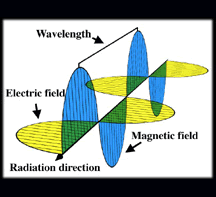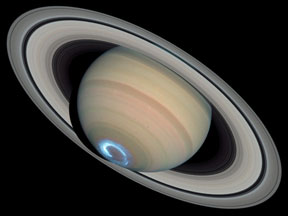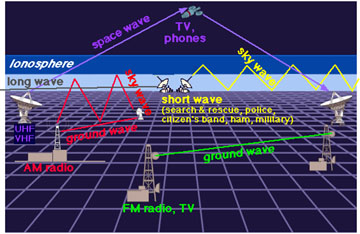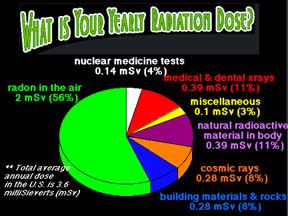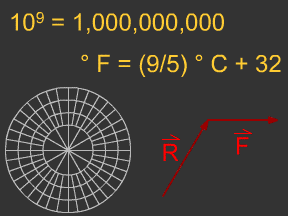Click on image for full size
Windows to the Universe original artwork.
Wavelength
The wavelength of a wave describes how long the wave is. The distance from one crest to the next, or from one trough to the next, of a wave is its wavelength. Water waves in the ocean, sound waves in air, and light waves of electromagnetic radiation all have wavelengths.
The greek letter "l" (lambda) is often used in equations to represent wavelength. The wavelength of a wave is inversely proportional to the wave's frequency. A long wavelength means a low frequency, while a short wavelength means a high frequency.
Sound waves in the range that humans can hear have wavelengths ranging from less than 2 cm (an inch) to about 17 meters (56 feet). The waves of electromagnetic radiation that make up the visible light that we can see have wavelengths between 400 (purple light) and 700 (red light) nanometers (10-9 meters).
The frequency and wavelength of a wave are related to each other by this equation:
l = c / f
where "l" is the wavelength, "c" is the speed of the wave, and "f" is the frequency. For light or other electromagnetic waves traveling in a vacuum, c = 299,792.458 km/sec (186,282 miles/sec), the speed of light. For sound waves moving through air, c is around 343 meters/second (767 miles/hour).
Red light with a frequency around 440 terahertz has waves about 682 nm long ( l = c / f = 2.99 x 108 m s-1 / 440 x 1012 s-1 = 682 x 10-9 m = 682 nm).
Sound waves with a pitch of 1,000 hertz (1 kHz) produce waves with wavelengths around 34 cm (l = c / f = 343 m s-1 / 1000 s-1 = 0.343 meter).


